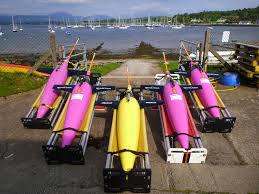North Atlantic Glider Base

The Scottish Marine Robotics Facility
The harshness of the marine environment and the difficulty of accessing our seas and oceans remains a major constraint on our ability to gain knowledge of marine systems. But modern technology increasingly allows us to make in situ observations in even the most challenging environments - often from afar.
We have a number of smart observation platforms, and a highly skilled and experienced workforce that develops new solutions and adapts existing technologies that drive the science of our oceans forward.
Since 2009 SAMS uses Gliders and AUVs to support research projects investigating the oceanography of the North Atlantic and Arctic Oceans.
About underwater gliders
Gliders are buoyancy driven and energy-efficient autonomous vehicles that can undertake independent journeys for up to seven months at depths between the surface and 1000m making continuous measurements of a range of seawater properties. They relay the collected data in real-time to the Institute and communicate with a pilot back at base using an Iridium satellite link. The glider pilot receives position, scientific and technical data and based on this can instruct the glider on waypoints to aim for during its mission.
Although limits in depth range, sensor availability and power supply mean that gliders will supplement rather than fully replace ship borne observations, the novel use of gliders to monitor the state of the global ocean opens up huge opportunities not only for understanding the state of the ocean, but also for undertaking new research that will build on our ability to predict future climate states.
SAMS currently operates seven Seagliders
Talisker (since 2008)
Ardbeg (since 2011)
Scapa (since 2014)
Laphroaig (since 2014)
Jura (since 2014)
Bowmore (since 2014)
Knockando (since 2014)